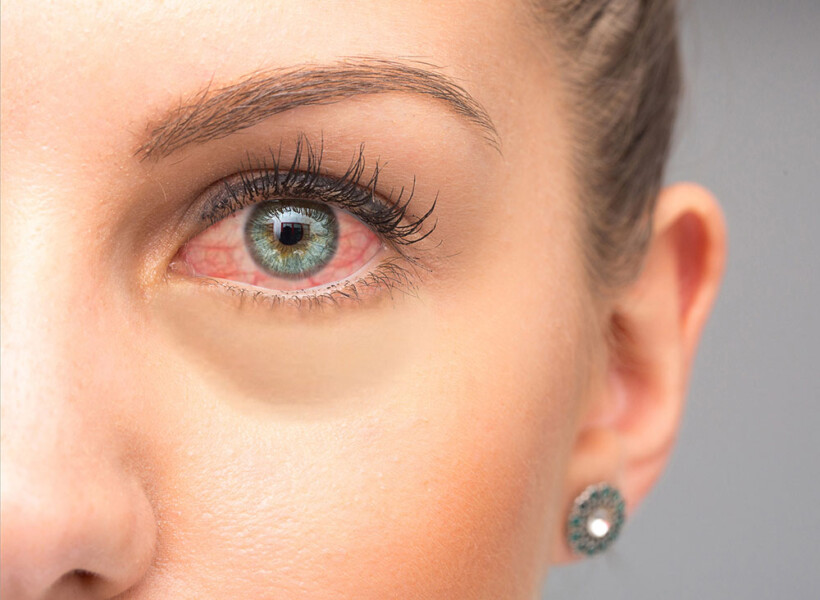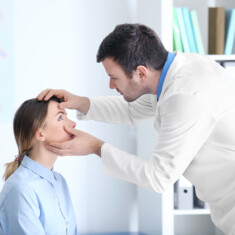What exactly are the symptoms?
The symptoms vary but can include any of the following: red, burning, or itchy eyes, grittiness or the feeling of a foreign body in the eye, blurred vision in severe cases, dry eyes, photophobia (sensitivity to light), recurrent eyelid infections, red swollen eyelids and dilated small blood vessels in the white of the eyes.
To diagnose the condition, it is of course recommended that you visit an eye specialist who will be able to look at all the symptoms and give an exact diagnosis. If you suffer from skin rosacea it may be advised that you see an eye specialist on a regular basis to check whether there has been an onset of ocular rosacea.
What causes ocular rosacea?
The exact cause is not known although it is thought that the condition might be hereditary. It might also be caused by eyelash mites, blocked eyelid glands, bacterial involvement, or even due to environmental factors.
The condition is made worse by a number of factors, some of which also inflame facial rosacea. A dry windy environment, sunlight and temperature extremes such as hot baths or saunas can dry out the eye. Stress or emotions and strenuous activities or even spicy food can cause a reaction. Many people may even find alcohol and strenuous exercise can exacerbate the symptoms.
For most people, it is just an irritation but in severe cases, the condition might lead to loss of vision. This can be caused by damage to the cornea or through complications caused by the misdirected growth of eyelashes.
What is the common treatment for Ocular rosacea ?
Before starting any treatment, it is vital that you visit an expert in this field who can diagnose the condition and decide on the best course of action. Generally, the treatments do not cure ocular rosacea but rather help to alleviate the symptoms. Different kinds of eye drops may be prescribed to be taken on a regular basis to moisten the eye or treat infection through antibiotics. The doctor may also prescribe oral antibiotics, such as tetracycline, doxycycline, erythromycin or minocycline. Sometimes a person may need to take a long course of antibiotics to get the condition under control.
OptiLIGHT to the rescue
People might find that using eye drops regularly is time-consuming and doesn’t fit into their schedule. Luckily, there is an effective treatment in the market that may reduce the dependency on eye drops. Lumenis’ FDA-approved light therapy uses patented Optimal Pulse Technology (OPT™) for targeted, precise, and controlled treatment to reduce the inflammation that is typically associated with dry eye disease. Treatment with OptiLIGHT alleviates abnormal blood vessels that contribute to inflammation and reduces the amount of Demodex mites and bacteria living around your eyes. The benefit to the busy person is that it does all this in a treatment regimen of 4 sessions that take around 15 minutes each. If you’re suffering from Ocular Rosacea, OptiLIGHT may very well be your best choice, an effective solution for visible results.







